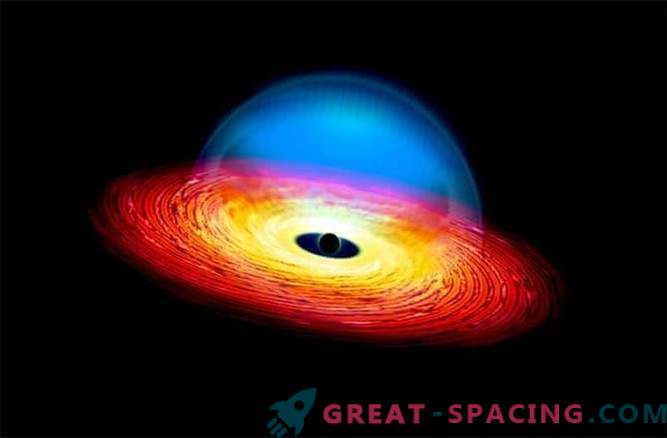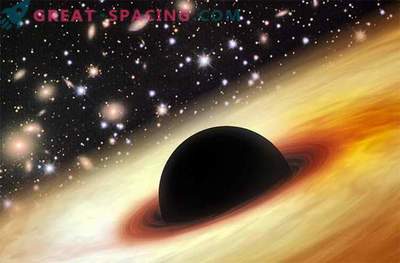
If a black hole does not get its “food” for a long time, it starts starving like a man. And, as in the case of people, her appearance from this can change greatly. This was confirmed by Yale University astronomers who observed a quasar that has undergone a large-scale eclipse.
"We looked at hundreds of thousands of quasars at this point, and now we have found one that is getting dark," said astronomer S. Megan Urry, the principal investigator of the whole process. "It can tell us something about his life."
Quasars are extremely bright galaxies containing very active supermassive black holes in the nuclei. In the early universe, quasars dominate, so astronomers use these objects as a means of understanding how the early universe and the galaxies contained in it are formed.
Comparing the observations of the same quasar several years from each other, Urry and her team found that the quasar darkens to 7 orders of magnitude. This suggests that something has changed with the quasar and its black holes - probably starvation.
“It's like a dimmer,” said junior researcher Stephanie LaMassa. - "The situation with food has changed - and the darkening. Because the life cycle of a quasar is one of the most unknown processes at the moment. It's amazing how it looks like a person - you are starving and changing." The quasar in question enters the Band 82 of the region along the celestial equator, and the researchers noticed that the blackout was accompanied by the weakening of the broad emission lines of the quasar. These emission lines, which can be detected at optical wavelengths, are created around a cloud of gas, "excited", or powered by radiation from the quasar itself. This radiation is generated by material falling into a black hole, so that the attenuation of emission lines indicates a black hole in the core of the quasar. There are still many mysteries and questions.
Understanding how a quasar goes out so quickly is really key for astronomers, as it shows in a very short time how a supermassive black hole diet changes the emissions coming from the quasar. All galaxies are believed to contain supermassive black holes. And, therefore, an understanding of all these processes associated with holes and quasars will enable us to better understand the structure of our entire cosmic Universe!
“This will help us further understand how black holes are growing,” said Urry.











































